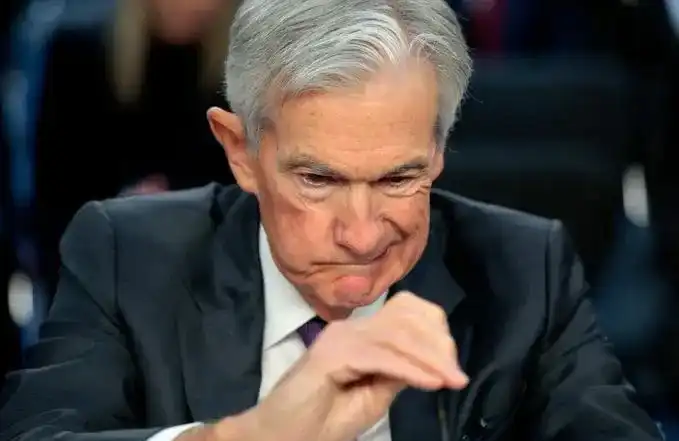Binance's Most Profitable Yield Stablecoin? Understanding the "Fee-Earn Double-Earn" of LDUSDT
Just yesterday, Binance announced that it will soon launch a new reward-based margin asset called LDUSDT. This is another "stablecoin" financial product that can be used as collateral for contract trading on Binance, following the launch of BFUSD in November 2024. What is it and how is it different from BFUSD?
The "Stablecoin" That Is Not a Stablecoin
LDUSDT is a "yield-bearing margin asset" designed by Binance specifically for futures trading, with the official note that it is not a stablecoin. Users can convert their held USDT into LDUSDT, a simple yield elastic product asset.
LDUSDT has two functions: it can serve as trading collateral while also earning yield. Binance allows users to use LDUSDT as collateral for perpetual contract trading (U-based contracts), and users holding LDUSDT can continue to receive real-time annualized returns from Binance's "Principal-protected Earn" savings product.
In simple terms, similar to the previously launched BFUSD, LDUSDT allows users' assets to have both "low-risk returns" and "liquidity." This is beneficial for Binance as well, as it can earn more lending interest and contract funding fees. The founder of the OG Crypto Community proposed, "If Binance chooses to use FDUSD to rebuild lending and perpetual contract liquidity, the underlying USD can even earn US Treasury bonds." According to a reserve report presented by First Digital Labs on February 28, the underlying USD composition of FDUSD consists of 85% US Treasury bonds. This is essentially a triple win scenario—LDUSDT is a product where Binance shares these returns with users.

How Is It Different from BFUSD?
After Binance launched BFUSD on November 27, 2024, products similar to it appeared on platforms like Dex Backpack and HUOBI exchange. However, their influence was not as significant as Binance's BFUSD. Nevertheless, after the launch of BFUSD, although the model was innovative and participants generally believed it could improve liquidity, some issues with the product also emerged.
There is significant yield volatility. BFUSD's yield consists of a base interest rate and a trading bonus, with the holding limit tied to VIP levels. This model is highly dependent on market conditions and users' own trading activities. While it could reach a peak APY of over 38% during bull markets, if the market is unidirectional or the trading volume is insufficient, the actual yield may be lower than expected, or even close to the minimum value of the base interest rate. During the high market liquidity at the end of last year, it could remain around 20-30%, but starting from February-March this year, the APY has almost approached 0% on many occasions.

There is a different interest rate for retail investors and professional traders, and BFUSD's additional rewards are linked to user's futures trading volume. High-frequency traders or large holders can significantly increase their earnings, while regular users with low trading volume may only receive the base interest rate, resulting in a less attractive proposition for them. This makes BFUSD's design more favorable for professional traders rather than ordinary retail investors.
On the other hand, LDUSDT, although similar in its use case to BFUSD, has a different income structure. BFUSD is based on a hedging strategy and staking mechanism, while LDUSDT's income comes from Binance sharing the annualized earnings of the "Simple Earn" where users can earn a guaranteed return, including a portion of platform fees, lending income, or some returns from low-risk investments.
For these reasons, BFUSD is currently not popular in the market. In contrast to BFUSD's significant volatility due to funding rate fluctuations, LDUSDT's advantage lies in its relative stability. However, the trade-off is that its interest rate may not be as high. While these interest rates may seem insignificant in a bull market, they present a good option in the current scenario of relatively low liquidity for those seeking stable earnings and liquidity. Moreover, as it does not rely on the user's own trading strategy, it is relatively simple to participate in, attracting more retail investors.
Launching a Series of Yield Stablecoins, What Is Binance's Intention?
In general, BFUSD is more like an investment tool, creating additional value for users through Binance's proactive actions, acting as a "Buff" that allows traders to earn extra rewards during a "bull market" through frequent trading. On the other hand, LDUSDT serves as a gateway, connecting Simple Earn and futures trading, incentivizing conservative users to trade during a "bear market."
KOL "Loki_Zeng" expressed his thoughts, stating, "Binance is too innovative. Thinking about the separation of stablecoin interest generation and circulation will inevitably lead to a revolution, and the one revolutionizing Binance is Binance itself." Whether it is BFUSD or LDUSDT, Binance aims to activate a large amount of idle stablecoins on exchanges and wrap them in a leveraged shell, allowing them to stay within the Binance ecosystem and continue to provide vitality to real business.
The water in this liquidity sponge is being squeezed by larger hands. Can it help us survive the dry spell before the "water release"? Currently, Binance has not provided more detailed information about LDUSDT, and BlockBeats will continue to follow this matter closely.
Welcome to join the official BlockBeats community:
Telegram Subscription Group: https://t.me/theblockbeats
Telegram Discussion Group: https://t.me/BlockBeats_App
Official Twitter Account: https://twitter.com/BlockBeatsAsia
 Forum
Forum OPRR
OPRR Finance
Finance
 Specials
Specials
 On-chain Eco
On-chain Eco
 Entry
Entry
 Podcasts
Podcasts
 Data
Data


 Summarized by AI
Summarized by AI







